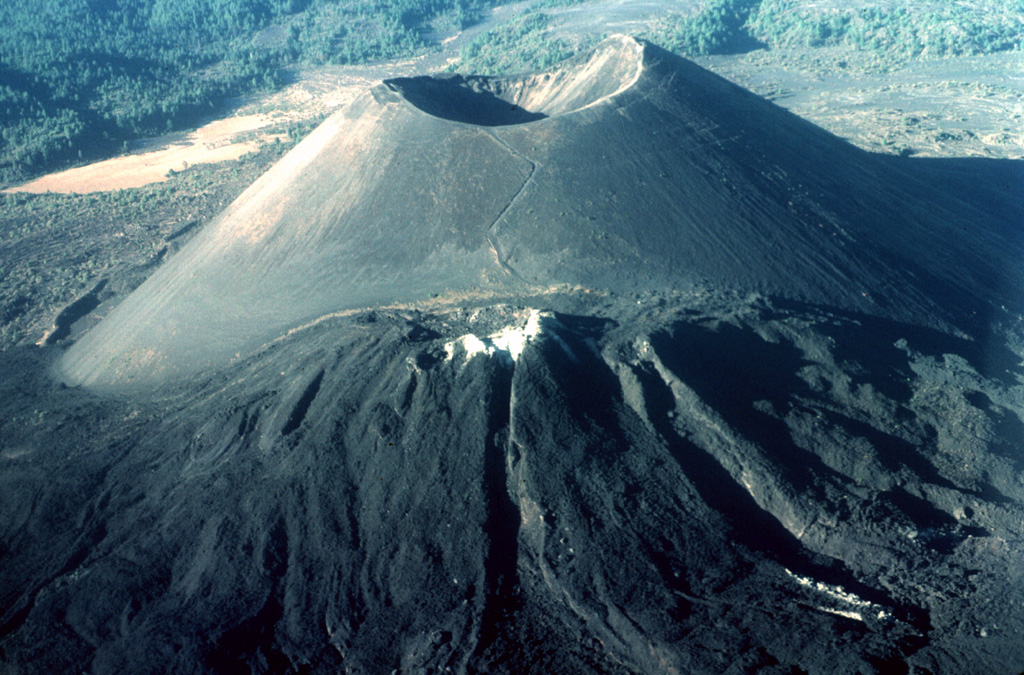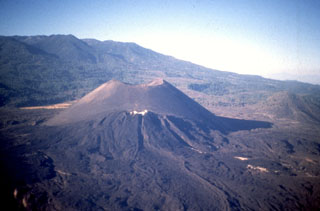Global Volcanism Program | Image GVP-05943

The renowned Parícutin scoria cone, which grew from a Mexican cornfield beginning in 1943, is one of the roughly 1,000 cones that form the massive Michoacán-Guanajuato volcanic field in central Mexico. White mineral deposits formed across the top of Nuevo Juatita in the foreground, a NE-flank vent that was the main source of lava flows during the last five years of the 1943-1952 eruption.
Photo by Jim Luhr, 1997 (Smithsonian Institution).
![]() This image is made available under the Public Domain Dedication CC0 license, but proper attribution is appreciated.
This image is made available under the Public Domain Dedication CC0 license, but proper attribution is appreciated.
Galleries: Craters | Scoria Cones
Keywords: scoria cone | crater | volcanic field | mineral deposit | vent | lava flow

Michoacán-Guanajuato
